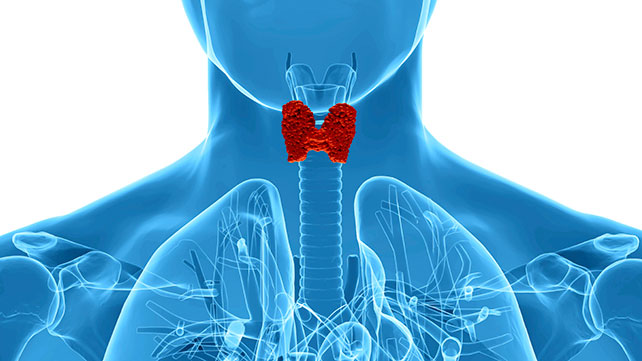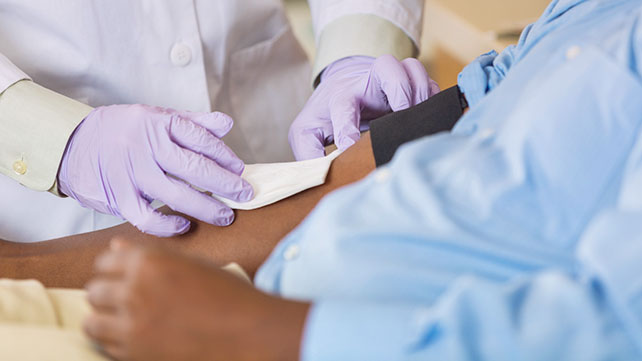
What are thyroid function tests?
Thyroid function tests are a series of blood tests used to measure how well your thyroid gland is working. Available tests include the T3, T3RU, T4, and TSH.
The thyroid is a small gland located in the lower-front part of your neck. It’s responsible for helping to regulate many of the body’s processes, such as metabolism, energy generation, and mood.
The thyroid produces two major hormones: triiodothyronine (T3) and thyroxine (T4). If your thyroid gland doesn’t produce enough of these hormones, you may experience symptoms such as weight gain, lack of energy, and depression. This condition is called hypothyroidism.
If your thyroid gland produces too many hormones, you may experience weight loss, high levels of anxiety, tremors, and a sense of being on a high. This is called hyperthyroidism.
Typically, a doctor who is concerned about your thyroid hormone levels will order broad screening tests, such as the T4 or the thyroid-stimulating hormone (TSH) test. If those results come back abnormal, your doctor will order further tests to pinpoint the reason for the problem.
Drawing blood for thyroid function tests
Talk to your doctor about any medications you’re taking, and tell your doctor if you’re pregnant. Certain medications and being pregnant may influence your test results.
A blood draw, also known as venipuncture, is a procedure performed at a lab or a doctor’s office. When you arrive for the test, you’ll be asked to sit in a comfortable chair or lie down on a cot or gurney. If you’re wearing long sleeves, you’ll be asked to roll up one sleeve or to remove your arm from the sleeve.
A technician or nurse will tie a band of rubber tightly around your upper arm to make the veins swell with blood. Once the technician has found an appropriate vein, they’ll insert a needle under the skin and into the vein. You may feel a sharp prick when the needle punctures the skin. The technician will collect blood in test tubes and send it to a laboratory for analysis.
When the technician has gathered the amount of blood needed for the tests, they’ll withdraw the needle and place pressure on the puncture wound until the bleeding stops. The technician will then place a small bandage over the wound.
You should be able to return to your normal daily activities immediately.
Side effects and aftercare
A blood draw is a routine, minimally invasive procedure. During the days immediately after the blood draw, you may notice slight bruising or soreness at the area where the needle was inserted. An ice pack or an over-the-counter pain reliever can help ease your discomfort.
If you experience a great deal of pain, or if the area around the puncture becomes red and swollen, follow up with your doctor immediately. These could be signs of an infection.
Understanding your test results
T4 and TSH Results
The T4 test and the TSH test are the two most common thyroid function tests. They’re usually ordered together.
The T4 test is known as the thyroxine test. A high level of T4 indicates an overactive thyroid (hyperthyroidism). Symptoms include anxiety, unplanned weight loss, tremors, and diarrhea.
The TSH test measures the level of thyroid-stimulating hormone in your blood. The TSH has a normal test range between 0.4 and 4.0 milli-international units of hormone per liter of blood (mIU/L).
If you show signs of hypothyroidism and have a TSH reading above 2.0 mIU/L, you’re at risk for progressing to hypothyroidism. Symptoms include weight gain, fatigue, depression, and brittle hair and fingernails. Your doctor will likely want to perform thyroid function tests at least every other year going forward. Your doctor may also decide to begin treating you with medications, such as levothyroxine, to ease your symptoms.
Both the T4 and TSH tests are routinely performed on newborn babies to identify a low-functioning thyroid gland. If left untreated, this condition, called congenital hypothyroidism, can lead to developmental disabilities.
T3 Results
The T3 test checks for levels of the hormone triiodothyronine. It’s usually ordered if T4 tests and TSH tests suggest hyperthyroidism. The T3 test may also be ordered if you’re showing signs of an overactive thyroid gland.
The normal range for the T3 is 100-200 nanograms of hormone per deciliter of blood. Abnormally high levels most commonly indicate a condition called Grave’s disease. This is an autoimmune disorder associated with hyperthyroidism.
T3 Resin Uptake Results
A T3 resin uptake, also known as a T3RU, is a blood test that measures a hormone called thyroxin-binding globulin (TBG). If your T3 level is elevated, your TBG level should be low.
Abnormally high levels of TBG often indicate a problem with the kidneys or with the body not getting enough protein. Abnormally low levels of TBG suggest high levels of estrogen in the body. High estrogen levels may be caused by pregnancy, eating estrogen-rich foods, obesity, or hormone replacement therapy.
Follow-up
If your blood work suggests that your thyroid gland is overactive or underactive, your doctor may order a thyroid uptake test or an ultrasound test. These tests will check for structural problems with the thyroid gland and any tumors that may be causing problems.
If the scan is normal, your doctor will likely prescribe medication to regulate your thyroid activity. They will follow up with additional thyroid function tests to make sure the medicine is working.
Hershman, J. M. (2015). Hyperthyroidism. Retrieved from http://www.merckmanuals.com/home/hormonal_and_metabolic_disorders/thyroid_gland_disorders/hyperthyroidism.html
Mayo Clinic Staff. (2015, November 10). Hypothyroidism (underactive throid). Retrieved from http://www.mayoclinic.org/diseases-conditions/hypothyroidism/home/ovc-20155291
Thyroid function tests. (2012, June 4). Retrieved from http://www.thyroid.org/thyroid-function-tests/



